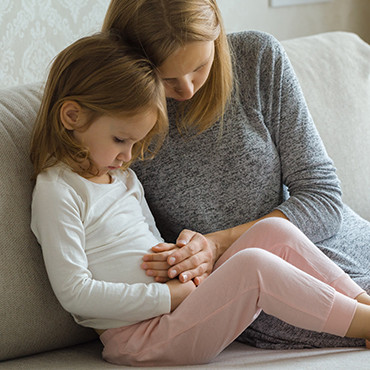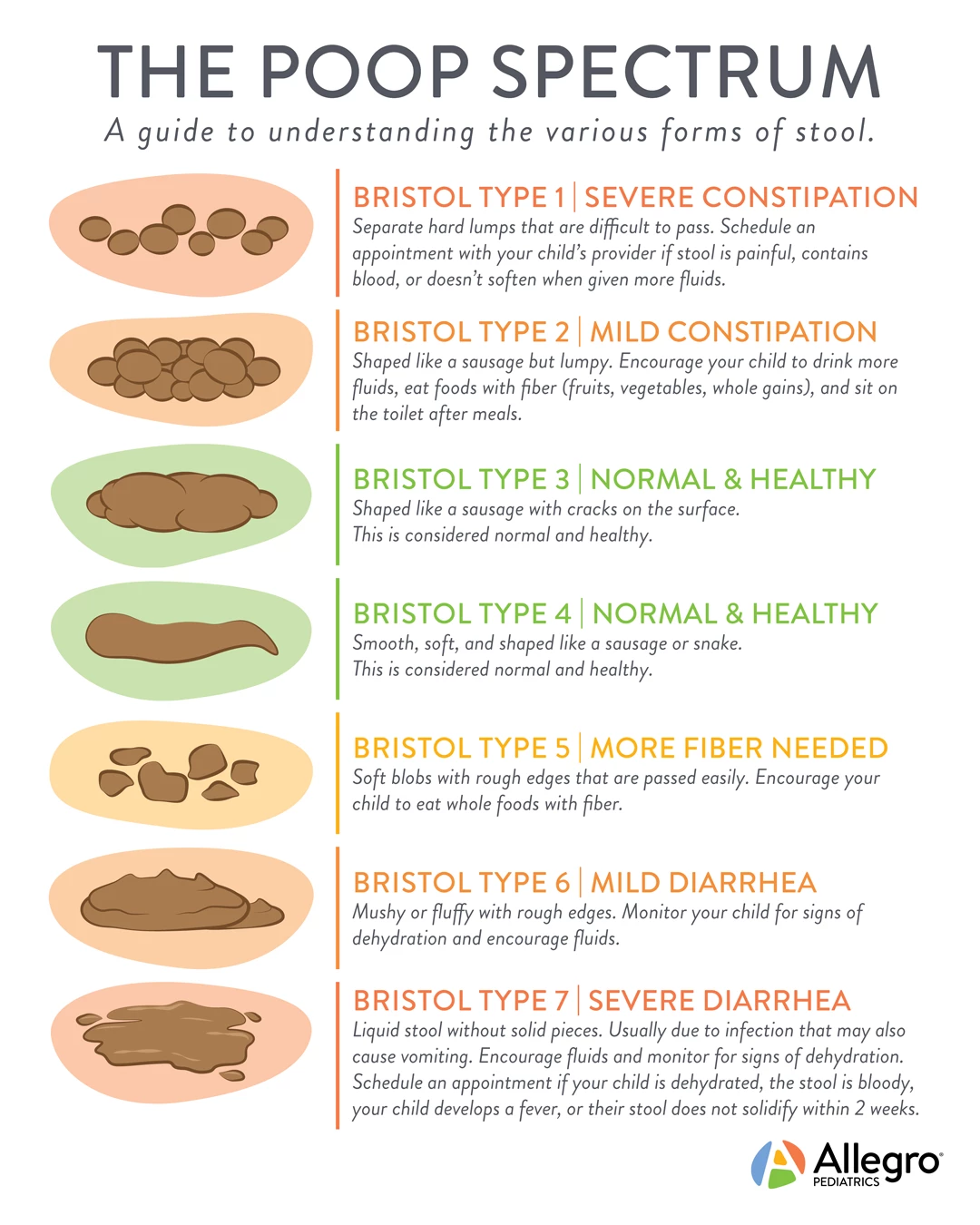Constipation is common in children. Children with constipation often have stools (poops, bowel movements, or motions) that are hard to pass, painful to pass, and/or infrequent (3+ days between stools). Learn what is considered healthy and what you should do if you believe your child may be constipated.
What is considered normal for babies and children?
Normal stooling differs slightly for young babies and children. Regardless of age, passing stool should be a pain free experience for your child. Additionally, your child should not need to strain or push for an extended period to pass their stool.
- Babies 0-4 weeks: After mom’s milk arrives or formula feeding starts, it is normal for babies to pass some stool after most feedings (at least 4/day). Parents should call their child’s Primary Care Provider (PCP) if they see any blood or if the stool is white. Breastfed infants often stool more frequently than infants fed formula.
- Babies 1-2 months: As a newborn’s gastrointestinal tract matures, it will get better at absorbing nutrients, so babies will slowly begin to stool less often. There can be a wide range of normal from 7 times per day to once every 7 days. There is no need to worry unless your baby appears to be in pain or there is blood or mucus in the stool.
- Babies 3-12 months: Most babies will poop anywhere from three times per day to once every two days. Your baby may become temporarily constipated when introducing solids into their diet. This should resolve as their body becomes used to solid foods. Parents can help prevent constipation when introducing solids by offering foods that promote stooling, such as fruits and vegetables, and offering sips of water.
- By 2 years old: Once children have transitioned to normal table foods, their stool pattern will be similar to that of adults. Most children will range from having 3 stools per day to 1 every 2 days.
There are some occurrences that may imitate constipation but are considered normal.
- Straining in babies: Babies under 9 months are still learning to relax the muscles needed to poop. They may grunt, strain, or look red in the face while they continue to learn this skill. This can be normal if they pass soft stool every day.
- Brief straining: Children may go through times where it takes up to 10 minutes to pass a stool. This can happen at any age and is considered normal if it is infrequent and not painful.
- Large stools: A large amount of stool can be normal. Large size, such as clogging the toilet, is not normal.
What does a healthy stool look like?
This chart outlines different types of stools and what is considered healthy and normal.
What are some common causes of constipation?
Many factors in your child’s daily routine and diet can contribute to constipation.
Common Causes of Constipation:
Changes in diet: Changes in your child’s diet may change how they poop. This may include dietary changes due to traveling. Encourage a healthy diet with fiber and more fluids to help get them back on track.
High dairy diet: Too much milk/cheese can cause constipation. If your child’s stool is hard, try decreasing the amount of milk to no more than 4oz with meals and encouraging water throughout the day. Yogurt is a form of dairy that is easier to digest and can help restore good bacteria into the microbiome.
Low fiber diet: Fiber in foods like fruits, vegetables, and whole grains is essential for proper digestion and to keep stool easy to pass. Too little fiber can cause hard, small stools.
Low fluid intake: Not drinking enough fluids, especially water, can cause stools to be dry and difficult to pass. Encourage your child to drink water. Consider allowing them to pick out a special water bottle or use a straw to help them feel empowered to stay hydrated.
Lack of exercise: Physical movement allows digestion to occur. A lack of exercise can slow digestion and the frequency of stools.
Painful stools: Children may hold back stools if they have had a painful experience when pooping. The pain may have been caused by an infection, a diaper rash, or a small tear around the anus. Contact your child’s PCP if they experience pain when pooping.
Holding back stools: Many children experience constipation because they intentionally (and unconsciously) hold their poop. They may refuse to use a public toilet, be nervous about pooping at school, or be too engaged in an activity to take a break and use the bathroom. Empathize with their fears and create a routine to sit on the toilet frequently enough to allow the passage of stool.
Common Times in Development that Constipation Occurs:
Starting solid foods: Expect changes in your baby’s stool when solids are introduced into their diet. Thicker food = thicker stools. You can offer up to 8oz of water per day to help prevent constipation. It’s also important to provide a balanced variety of foods. Consider adding flax and chia seed powder to purees and be sure to provide whole grains, fruits, vegetables on days you give carbs and dairy.
Toilet training: Some children take time to become comfortable sitting on the toilet. Consider reading a story to make the practice more fun and time limited. Know your child will more easily stool after eating. Allow them to poop in a diaper if that is the only way to ensure they are going frequently enough.
School entry: Treat by alerting the teacher to encourage them to go after lunch if needed and creating daily routines that allow sitting on the toilet at home after eating breakfast and dinner.
When should I call my child’s Primary Care Provider (PCP)?
Contact your PCP if your baby or child experiences pain while pooping or if there is blood in their stool.
For babies 4 months old and younger, contact your PCP if your baby has less than 3 bowel movements per week or experiences hard (rather than soft/pasty) stools.
For children 5 months and older, contact your PCP if your child has infrequent stools (less than 2 times per week consistently), experiences stomach pain when pooping, has stools that clog the toilet, experiences repeated bouts of constipation (stools persistently Bristol type 1-2), strains/pushes for a long time to get their stool to pass, especially if you see a hemorrhoid or abdominal distension, or you see traces of liquid stool in your child’s underwear, a sign that stool is backed up in the rectum and leaking around the blockage.
Keep Reading
View All Posts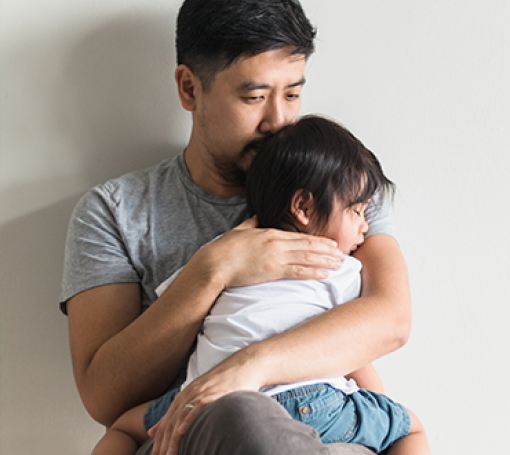
Vomiting & Diarrhea
Vomiting and diarrhea in children is typically caused by a virus affecting the stomach. Vomiting is the body's way of protecting the intestines from germs. Diarrhea is the body's way of getting rid of germs.
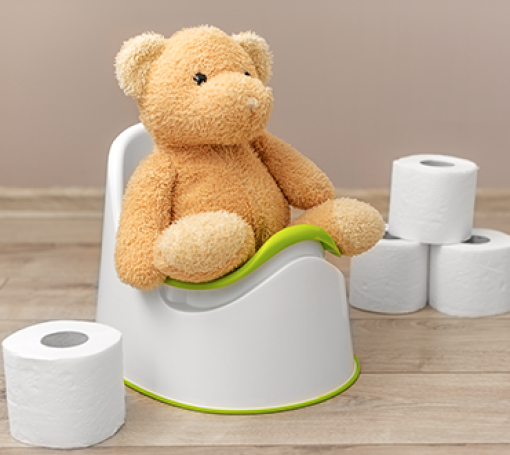
Toilet Training
Learn the signs your child is ready to potty train, how to prepare them, and how to transition to the toilet.
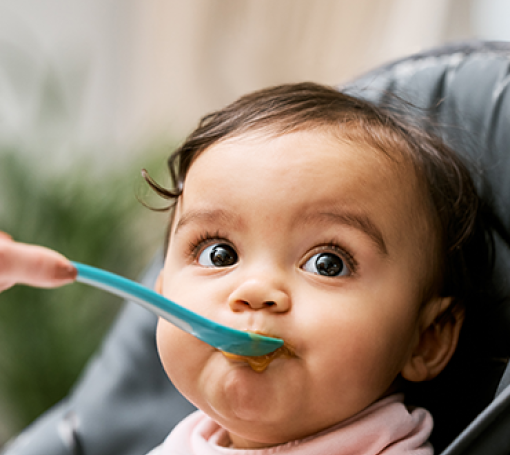
Starting Solids
Learn the signs that your baby is ready to start solids, what foods to avoid, what foods to encourage, and how to introduce solid food into their diet.

